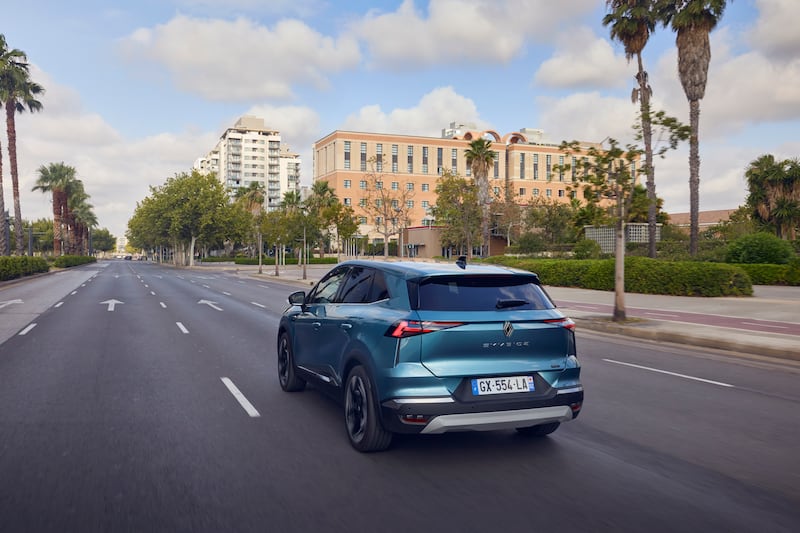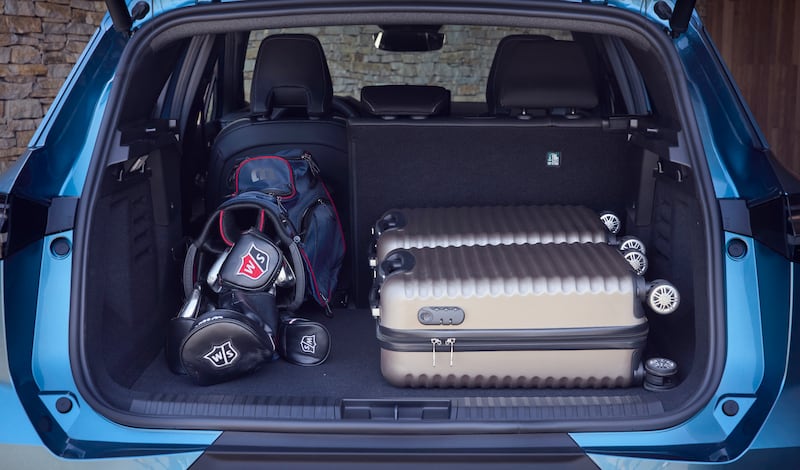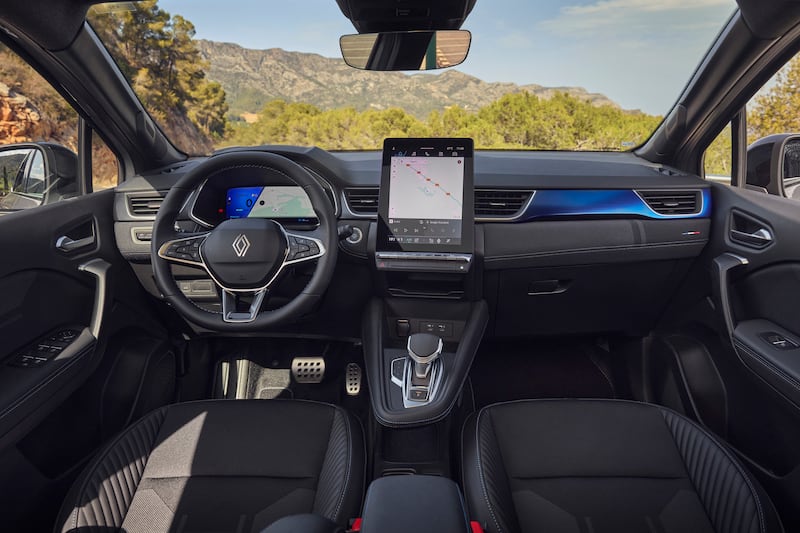The total takeover of the car market by the SUV has been remarkable.
It’s not been a good thing for the environment – the International Council on Clean Transport, or ICCT, reckons that the inherent inefficiency of SUV body styles has wiped out, and then some, gains in engine and battery efficiency in the past decade – but it’s hard to argue with what the customer wants. And what the customers wants, so it seems at any rate, is an SUV.
It’s madness, really. SUVs originally became popular – especially with the introduction of the first Nissan Qashqai – because they were different, they were fashionable, they made you stand out from the herd. Now the entire herd is driving an SUV of some sort, and one wonders when the whole ridiculous edifice will finally collapse in on itself.
Until that happy day comes, SUVs proliferate. Already, at Renault, you can buy no fewer than five distinct SUV models – Captur, Arkana, Austral, Rafale and Scenic, with the new Renault 4 on the way and the now-inevitably-SUV-shaped Espace on sale in Europe.
READ MORE
Yet amid all of that, Renault has found a way to slice the SUV onion paper even thinner, and has given us this, the Symbioz. The original Symbioz concept car, shown in 2017, was an astonishingly beautiful, low-slung luxury car with delicate details and striking styling.
The production Symbioz is, alas, a mid-size SUV. To be fair to the Symbioz, it’s quite handsome by SUV standards, looking very much like a shrunken Scenic (the modern electric SUV, not the egg-shaped 1990s people carrier). It has sharp, but relatively elegantly angled lines, so it won’t get too easily lost in a car park, even amid the hordes of other pointlessly tall family cars.
In terms of price and size, the Symbioz fills the gap between the smaller Captur and the larger, more mechanically sophisticated Austral. It’s based on the same platform as the Captur – something you’ll spot inside, as much of the dashboard is lifted directly from that smaller car – and it’s not too tall, standing 1.6m high at the roofline.
Prices start from €36,995 but our highly-specced Esprit Alpine test car (and the invocation of Renault’s sports car and racing brand has never seemed quite so out of place) clocks in at €41,195. You do get a lot for that extra cash, including an excellent Google-based portrait-style touchscreen, and the brilliant ‘Solarbay’ glass roof, which electrically switches from opaque to clear at the flick of a switch.


The Symbioz comes with only one engine option for now, and that’s the 145hp 1.6-litre hybrid engine as found in the Captur, the Clio and sundry Dacias. It’s a decent enough power plant but feels oddly underpowered at times here in the Symbioz, not something we’d really noticed in other applications.
It does spend a commendable amount of time on electric power alone, which is good, especially around town. Renault claims 4.7 litres per 100km and 1,000km on a full tank. We managed 5.3 litres per 100km, and about 700km on a tank. Not bad, but perhaps not quite exceptional.
If you’re looking for a reason to choose the Symbioz over the more affordable Captur then it might well be in the boot. The back seats slide back and forth, which means the boot stretches from a minimum of 492 litres to a maximum of a whopping 624 litres – more than an Audi Q8. However, do that and your rear-seat passengers will have no legroom.
Then again, your rear-seat passengers won’t have much legroom anyway. Indeed, despite its extra size, the Symbioz seems to lack much more space than the smaller Captur in the back, which is a bit of a disappointment.
The Symbioz cruises quietly and largely comfortably. The ride quality can be somewhat firm around town, but it’s broadly acceptable, and the body and cabin remain remarkably stable when cornering. However, the steering is incredibly slow-witted and needs you to suddenly throw on an extra half-turn of lock to make it around 90-degree junctions. It’s odd – no other Renault steers like this, so why the Symbioz?
Indeed, ‘why the Symbioz’ becomes something of an apposite question. While it certainly does fill in a gap in Renault’s SUV line-up, it’s a hard car to make a convincing case for. Matlock himself would have struggled. It’s fine, does nothing especially badly (that odd steering apart), and does many things quite well, but it never seems to do anything to make itself stand out.

The bigger problems arrive when you glance across the showroom. The Captur is sitting just over there, not being all that much smaller and with the same hybrid engine, and costing less.
However, things get worse for the Symbioz when you glance further across, and come to the Dacia section of the dealership. There you will find the brilliant seven-seat Jogger – which costs €4,000 less even in range-topping Extreme spec with the same hybrid power train.
Obviously, it loses out on some of the Symbioz’s comfort and sophistication, but honestly, would you care? Then there’s the incoming new Duster, which will again undercut the cost of the Symbioz even when fitted with the hybrid engine, and which arguably looks even nicer.
And then again there’s the Bigster, just revealed at the Paris motor show, and which will likely match the Symbioz for price but be bigger inside, and more enticingly rugged outside. A proper 4x4, at least in style, rather than a mere SUV.
It’s not that the Symbioz is a bad car, it just seems a touch humdrum amid the endless, swirling sea of similar rival products. SUVs have long since moved past their fashionable stage and are now just as dull and unadventurous as the hatchbacks, saloons, MPVs and estates which they have largely displaced. It seems perhaps unfair to beat the Symbioz with the stick of silliness that encompasses the entire SUV craze, but it’s clear that a rethink is needed.
Lowdown: Renault Symbioz Iconic Esprit Alpine E-Tech full hybrid
Power: 1.6-litre four-cylinder petrol engine with 105kW motor and 1.2kWh lithium-ion battery producing 145hp and 250Nm of torque and powering the front wheels via a six-speed automatic transmission.
CO2 emissions (annual motor tax) 107g/km (€180).
Fuel consumption: 4.7l/100km (WLTP)
0-100km/h: 10.6 secs.
Price: €41,190 as tested, Symbioz starts from €36,995.
Our rating: 2/5.
Verdict: Looks smart but the Symbioz feels underwhelming to drive, and it lacks rear seat space. Dacia looms large in its mirrors.














